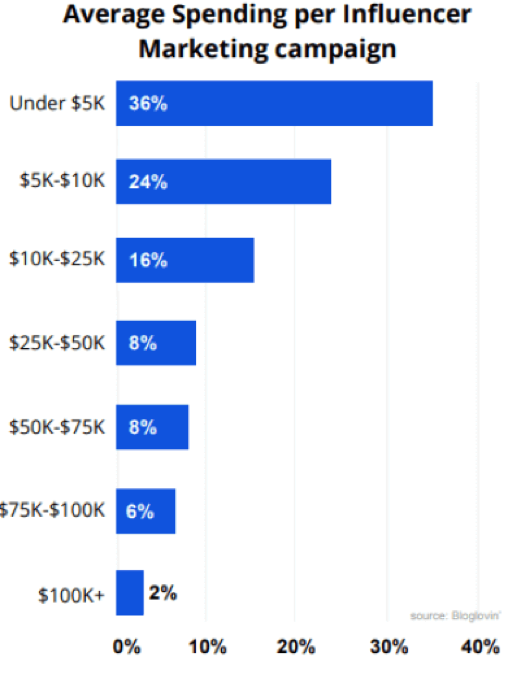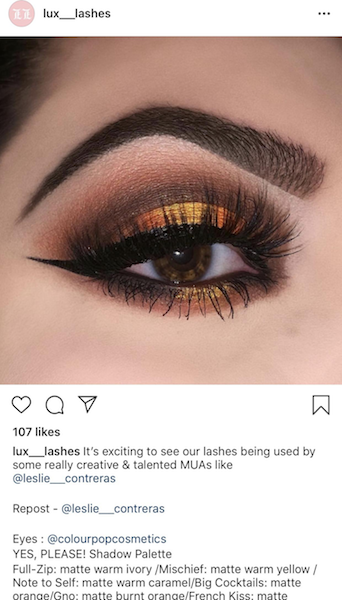How to Create an Influencer Marketing Campaign

How to Create an Influencer Marketing Campaign
Contributed ContentInfluencer marketing introduces a new way to use social media to promote your brand. Learn how influencer marketing can help your business stand out and reach a wider audience.
Influencer marketing allows brands to connect with influential people to represent their brand. It combines social networking and marketing to maximize growth.
Businesses partner with social media influencers or celebrities that have large social media followings to share information about their products or values.
New research shows us how important influencer marketing is.
MediaPost found that young people between ages 18-34 prefer to receive information about a brand on social media, and Forrester research found that B2B buyers rely on online communities before making a buying decision.
Businesses can capitalize on the opportunities influencer marketing holds but only if they approach it strategically.
1. Develop an Action Plan
A successful influencer marketing campaign requires a solid plan to kick it off the ground and stay on budget.
Outline the Steps You Need to Meet Your Goals
Your influencer marketing campaign won’t succeed if you don’t know what you want to achieve.
Think critically about what you hope the campaign will achieve, and detail the steps you need to take to make it possible.
To hold your team accountable, be sure to create a timeline of when specific steps need to be completed.
Consider Your Budget
Think about your budget and how much you will need to pay for influencers to sponsor your content.
Businesses typically spend $5,000 or less on influencer campaigns but can spend more than $100,000.

These costs can vary depending on the influencer, the social media platform, and the scope of your campaign.
To make sure you don’t overspend, set a budget for your campaign and negotiate costs with the influencer you choose to represent your brand.
Choose the Right Social Media Platform
Not all social media platforms are created equally, so the one you choose for your influencer marketing campaign should not be chosen at random.
Consider your industry, target audience demographics, and the nature of the campaign.
Facebook, YouTube, and Instagram are the top three platforms and all attract different types of users.
For example, businesses such as Lux Lashes that have a young, female audience and a visually driven campaign might choose Instagram.

Instagram users tend to skew female and between the ages of 25-34 and tend to respond well to visually compelling content.
By knowing who your audience is, what platform they use, and what content they respond to, you can better plan your influencer campaign so it resonates with your target audience.
Identify Which Metrics to Track
Key performance indicators (KPIs) are indicators you can track to measure your success.
It’s important to track KPIs throughout the campaign so you can see what is and is not working and adjust as needed.
With social media, it's best to avoid tracking vanity metrics such as number of followers. Instead, businesses should track engagement or other metrics that directly relate to the campaign's goals.
2. Find Your Influencer
After you’ve outlined your goals, selected your platform, determined your budget, and identified the appropriate KPIs to track, you need to find the right influencer for your brand.
The right influencer is one that can help you meet your goals and may not be the one with the most followers. Before choosing influencers, consider:
- The size of their following and number of engagements they receive
- Their audience demographic
- What type of content they typically produce and whether it matches with your campaign goals.
This process can be tedious, but marketing tools such as Klear and BuzzSumo can help you narrow this list down. You can also search hashtags to see who promotes content similar to yours.
Researching competitors can also help you locate influencers for similar campaigns.
3. Reach Out to Target Influencers
Once you’ve identified a short list of influencers you would like to recruit for your campaign, reach out to them.
State your goals, how much you’re willing to offer, and what would be expected of them.
Even if the preliminary conversation goes well, don’t feel obligated to make a decision right away – Always be sure the person is the right fit for you and your business.
4. Use a Contract
An official contract is usually best between you and your team of influencers.
This document can outline:
- What the influencer should expect from you
- What you expect from the influencer
- Whether the influencer will work with the competitors during the campaign
- Length of partnership
- Where you can use the content the influencer produces
Be sure to detail every goal and objective so you can refer to it as needed.
This part of the process usually sees a lot of back and forth but the outcome is one that allows for a smooth partnership.
5. Provide Continual Support for Influencers During the Campaign
Communicate with the influencers throughout the campaign, making sure they understand your specific goals.
Help them understand how they should create content, deliver supporting materials, and provide the equipment they might need to create photos or videos.
This will ensure the influencer marketing campaign runs smoothly and won’t experience setbacks due to miscommunication.
6. Measure Progress and Success of the Campaign
How will you know the campaign succeeded? The only way to know this is to analyze the KPIs you identified while developing your action plan.
Additional metrics you should pay attention to include:
- Social media growth: Did you experience a boost in your social media following? Although this does not necessarily equate to immediate sales, growing a solid follower base is an important aspect of developing a brand.
- Website traffic: Did the number of people that visit your website increase from a campaign? New users are potential customers and this as a significant success measure for any influencer market campaign.
- Sales data: Did you see a rise in conversions?
You can also track if the activities in your campaign generated sales immediately or over an extended period of time.
Designing a Successful Influencer Campaign Requires a Well-Planned Strategy
Businesses should create social media plan and think critically about who their audience is, what they hope to achieve, and how much they’re willing to spend on sponsored content before contacting influencers.
Influencer marketing campaigns can help businesses attract new customers, share information about their products, and increase brand awareness but only if they take the time to develop a strategy.
If you're still unsure of how your business can leverage social media and influencer marketing, contact a top social media marketing agency.
